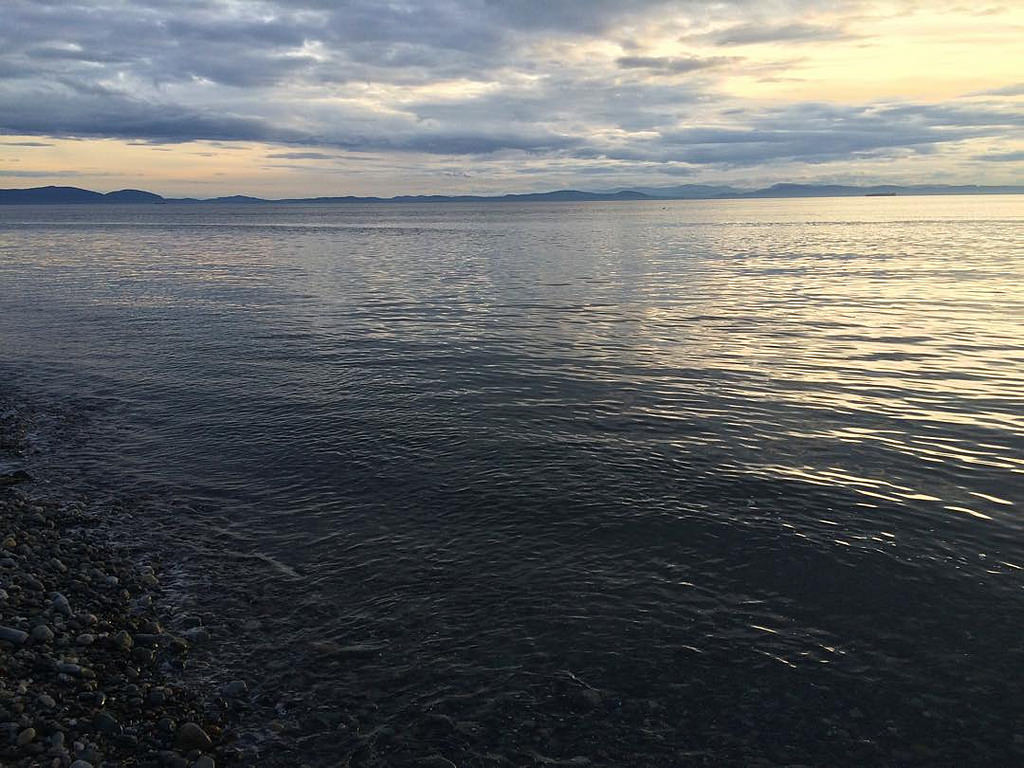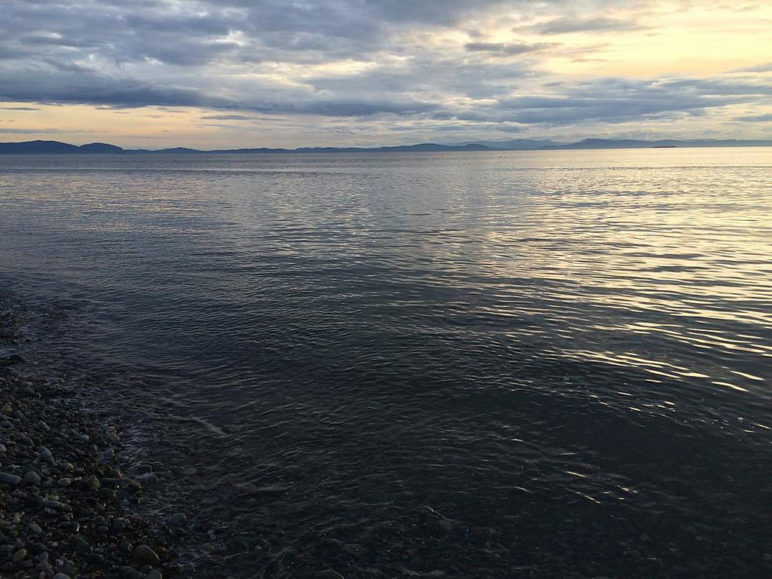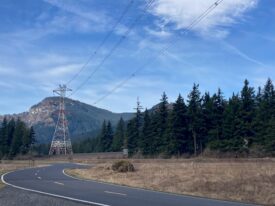Editor’s note, 1/27/20: This article has been updated with an addendum.
An oil spill in the Salish Sea could be ecologically devastating. That’s widely accepted. But how much would it cost? Apparently, no one knows.
It’s a critical piece of information missing for Washington, a state with an oil industry that continues to expand relentlessly, decade by decade, slowly ratcheting up the risks of catastrophe for the region’s prized marine environment. The trends all point toward more. More oil trains, more vessel shipments, more refinery capacity, and—maybe—a big new pipeline expansion. Given the serious economic risks of an oil spill, it would be prudent to ask what a reasonable worst-case scenario might mean for the state and its taxpayers.
To try to answer that question, Sightline took a deep dive in 2018, hunting for any credible cost estimates of an oil spill in the Salish Sea. Anything that would help us understand the risks the oil industry is foisting on the Northwest and its taxpayers. But we didn’t find much. There was one outdated study and a smattering of estimates from nearby regions, but these numbers ranged from $215 million to a staggering $10.8 billion—a factor of 50.
The spread between these estimates reflects, to a degree, the various ways that an oil spill might play out. But more important, it demonstrates a terrible lack of precision that makes it difficult for the state to manage risk. Despite all the fights over proposed oil expansions and industry pollution, the Northwest seems to have not even the foggiest notion of what a reasonable worst-case scenario oil spill might cost.
Since we published our review, not much has come to light but for one item: a November 2019 study commissioned by California’s Office of Spill Response and Prevention. The study is not about the Salish Sea, of course, but rather is designed to help inform new California requirements for inland oil companies and requirements for vessels. In 2014, the Golden State legislature extended a requirement that oil companies must prove their ability to pay damages in the event of an accident—a regulation conspicuously absent in Washington.
By modelling costs based on historical data from oil accidents, the report estimates a per-barrel cost for a marine spill in California. It finds that a spill of heavy persistent oil—the type of crude that is often transported in the Salish Sea—could cost up to $70,386 per barrel for spills between 100 and 10,000 barrels, which works out to a potential cost of more than $700 million for a 10,000-barrel spill.
Economies of scale in cleanup operations mean that the per-barrel cost of accidents may actually decrease with larger spills. In fact, the report suggests that in some cases the per-barrel cost of a very large spill could be just one-tenth as much as for a smaller one spills. Still, it’s important to keep in mind that a single oil tanker may carry 400,000 barrels of crude or more, while tank barges may have 150,000 barrels in tow. These vessels make nearly 4,000 trips each year on the Salish Sea and Washington has seen multiple spills of thousands of barrels of fuel, although the region has avoided a truly major spill for the last two decades.
The estimate of $700 million from California fits in the range of values we found in previous studies, but it also fails to tally for a range of important costs. The California modeling exercise did not account for wider economic costs beyond the clean-up efforts and liabilities, such as losses to recreation or ecological value, or to tourism, or for the many marine-dependent jobs that are impacted indirectly. In other words, the California study reflects some of the costs of an oil spill, but the estimate is akin to seeing just a few line-items on potentially lengthy bill that would come due.
What’s more, future spills are likely to be even more expensive. Clean-up costs have been rising exponentially since the 1970s, well outpacing inflation, and even small spills are more expensive on a per barrel basis than they were in the past. Safety measures may be making large spills less common, but the cost per barrel is going up steeply. This phenomenon of rising costs further undermines the reliability of the one estimate sometimes used by the Washington Department of Ecology that pegs of the cost of a Salish Sea spill at $10.8 billion. (As far as we can tell, no one knows exactly where that figure comes from. It may be based, in part, on an analysis of a single coastal location, but the explanation seems to have vanished into the mists of time.) The Ecology estimate is probably 16 years old at least, which is a problem because the new California report suggests that per barrel costs have increased by a factor of four. Whether that means a Salish Sea spill might now cost a mind-bending $40 billion-plus is unclear, but it does suggest the need for updated estimates.
Simple pragmatism suggests that we should understand the potential cost of an oil spill in the Salish Sea. The risk is real—and likely to grow—and the region can ill afford to wait for catastrophe to find out what the bill is.
Addendum: Thanks to Lovel Pratt for sharing with us another study, published in 2019, that takes a different approach to understanding the cost of an oil spill. While the California report looks at legal costs, penalties, and clean-up costs, this report by Earth Economics used the San Juan Islands to model a spill and examine the impact on commerce, taxes, property values, recreation use value, and ecosystem services. The analysis concludes that a spill of 4 million gallons (or about 95,000 barrels) of diluted bitumen could cost $142.3 million to $509.9 million, while a spill of 1 million gallons (or about 24,000 barrels) of heavy fuel oil could cost $84.3 million to $243.2 million. The authors describe these figures as conservative estimates because they don’t include potential costs to marine transportation, science and education, endangered species, human health, or cultural resources. In addition, the figures refer only to the costs of spill impacts in San Juan County, even though the spill scenarios used in the models would mean that oil reaches the shorelines of other areas of Washington and British Columbia.
Paelina DeStephano is a contract researcher and environmental policy nerd with a deep appreciation for government recordkeeping, from permits to public disclosures. In the midst of pursuing a Masters of Public Policy at Duke University, she also studies clean energy transitions and carbon offsets.











John Abbotts
Thanks Eric and Paelina,
For providing the link to earlier article on this topic, where we suspected that
“’results of these and other scenarios’” are available in an earlier 26-volume report done by many of the same authors [with the consulting firm Applied Science Associates] that reportedly was submitted to the Department of Ecology in 2004. We suppose that this full report explains the $10.8 billion and 165,000 jobs estimate, but its location—and its contents—still elude us. In any case, it seems not available to members of the public.”
As far as I know, Ecology never responded to our earlier article, suggesting that the full report remains unavailable, and/or that the methodology used by the consultants is proprietary. It may take a while to get an answer, and sifting through 26 volumes would likely take longer, but it someone may want to make a public records request to Ecology for the original report or any update. Or the legislature should request an update, maybe?
Greg Challenger
See also. Dunford, Richard W, Gmur, Stephan, Lynes, Melissa K, Challenger, Greg E, & Dunford, Michael A. (2019). Natural Resource Damages from Oil Spills in the United States. Environmental Claims Journal, 31(2), 176-190.
Paelina DeStephano
Thanks for alerting us to this article! For those stymied by the paywall, this article focuses on the cost of natural resource damages as a result of oil spills in the US. Their model explains 60% of the variation in NRD settlements – based on their database of 78 spills. NRD settlements range from $51,400 to $61.4 million with an average of $5.3 million. Their statistical analysis finds that spills in California are more expensive all else equal, and spills in Texas and Louisiana are less expensive – these are the only regions they assess individually. As you could imagine, the amount of oil spilled is the most important explanatory variable in predicting the cost of the NRD settlement. Settlements after Deepwater Horizon’s settlement have also increased, though they note this effect may be temporary.
They found that the type of oil spilled, the type of water (freshwater/saltwater), and whether it came from a vessel did not explain variation in the NRD settlement amount. They aren’t explicit in how they sought to categorize the type of oil, which would be useful to know as this result differs from the California report we just reviewed.
They go on to predict the NRD settlement cost of three modeled spills. It could be a really useful study to reference in conducting a cost-benefit analysis. Overall it’s an interesting paper and adds to our understanding of cost drivers for oil spills. However, it’s hard to compare the numbers from this study with the studies we’ve been looking at since NRD is just a portion of total costs.
Steve Erickson
“In fact, the report suggests that in some cases the per-barrel cost of a very large spill could be just one-tenth as much as for a smaller one spills.”
I suspect this is because its basically impossible to deal with very large spills. So a 1000 gallons spilled during a refueling accident gets very thoroughly cleaned up, but 20 million gallons? The oil goes where it goes and is basically impossible to contain, let alone “clean up” – whatever that means. Its the “cat out of the bag” or “horse out of the barn” phenomenon, if a cat or horse could rapidly spread in multiple directions and cause cascading havoc all along the way for a very long time.